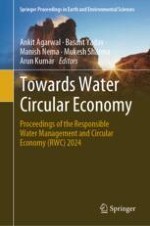Responsible water management and circular economy aims to establish a common understanding of circular economy principles and resilience in the water sector and to support countries in the implementing those principles. It is essential for water security to deal with the effect of climate change. It can be achieved through smart water management, use of non-conventional water resources, rejuvenation of natural water systems, using advance tools and techniques and adaptation strategies. It will help in improving the water availability in terms of quantity as well as quality and human health. Smart water governance and educating society can also play an important role in achieveing the Sustainable Development Goal (SDG 6) “Water for all“. The book aims to accelerate interaction among various stakeholders.
